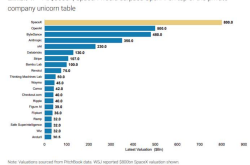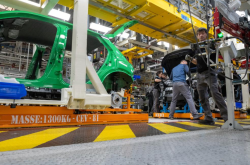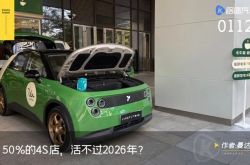Helix System: Revolutionizing Logistics with Humanoid Robots Through Perception and Motion Control Technology
![]() 07/25 2025
07/25 2025
![]() 520
520
Produced by Zhineng Technology
Figure's Helix system is accelerating the integration of humanoid robots into the logistics industry by seamlessly blending the "Vision-Language-Action" model with advanced control strategies.
At the heart of Helix lies a core technology system centered on stereo vision, multi-scale representation, self-calibration, and efficient motion planning. This system demonstrates remarkable human-like adaptability and operational capabilities in dynamic, highly complex real-world tasks.
With optimized data utilization methods and cross-robot transfer capabilities, Helix overcomes traditional robots' dependence on hardware consistency and extensive training data, paving the way for scalable embodied intelligence in the future.

01
Helix's Core Perception and Control System Design:
Merging Human-like Cognition with Industrial Efficiency
Helix's architecture revolves around the "Vision-Language-Action" (VLA) model, creating a continuous closed loop for the robot's perception, understanding, and execution behaviors.
Its core subsystem, System 1 (S1), functions as the robot's "low-level neural network," responsible for real-time perception and motion generation. The latest iteration of S1 integrates key technologies such as implicit stereo vision, multi-scale visual processing, proprioceptive learning, and motion pattern generation.

● Implicit Stereo Vision for Accurate 3D Environment Reconstruction: Unlike traditional systems that rely on monocular images or explicit binocular stereo vision, Helix's implicit stereo vision technology achieves 3D spatial understanding without external calibration by fusing multiple temporal image frames and sensor feedback. This not only enhances depth estimation accuracy but also significantly improves the handling of non-standard shapes.
● Multi-scale Visual Representation: Balancing Local Details and Global Scenes: Helix leverages a multi-scale visual processing network to perceive fine local features and environmental-level information simultaneously, enabling accurate understanding of objects' geometric and semantic attributes.
● Learning-based Visual Proprioception for Adaptive Transfer Between Robots: To address minor assembly deviations or sensor position differences, Helix embeds a vision-driven proprioceptive module in each robot. This module continuously adjusts perception and motion strategies during runtime, enabling device-level online self-calibration.
● High-speed Motion Modes: Compressing Execution Time Without Sacrificing Accuracy: Helix introduces "motion pattern resampling" technology, allowing robots to significantly increase execution speed while maintaining trajectory shape. This enhances average execution efficiency by 50%, ideal for high-speed package sorting.
Helix's perception and control system integrates spatial modeling, multi-resolution feature extraction, and embedded proprioceptive learning, enabling rapid understanding and efficient motion generation in dynamic environments. This lays the technical foundation for handling "unstructured, variable object" tasks in logistics.
02
From Data to Deployment:
How Helix Achieves Low Data Dependency and Cross-device Scalability
Industrial-grade AI systems face challenges in training data quality, efficiency, and generalization across different hardware platforms. Helix has optimized both aspects, enhancing its practical deployment on humanoid robots.
● Curated Data Training Strategy: Achieving Expert-level Performance with 8 Hours of Demonstrations: Helix abandons reliance on massive low-quality data, opting instead for meticulously curated high-quality human demonstrations. This strategy enables Helix to achieve expert-level flexibility and decision-making in package handling tasks using minimal demonstration data.
● Extracting Generalization Strategies from Optimal Trajectories: To adapt to variations in package size, shape, and material, Helix focuses on extracting generalizable operational principles rather than memorizing specific actions. This significantly improves the system's adaptability to new scenes and objects.
● Cross-Robot Transfer with Vision-Driven Strategy Mapping Mechanism: Due to slight hardware differences between robots, traditional solutions require individual debugging. Helix's vision-driven proprioceptive mechanism can perceive and correct errors, enabling strategy transfer within minutes using a few environmental interaction samples.
● Architecture Optimization for Fleet Deployment: When deploying multiple robots in logistics centers, system stability and consistency are crucial. Helix's software and hardware collaborative framework ensures consistent performance across different robots, supporting unified version management, strategy synchronization, and remote updates.
By leveraging data-driven strategy design and system-level structural adjustments, Helix equips humanoid robots with "less training - efficient execution - cross-device generalization" capabilities, breaking traditional deployment and maintenance cost limitations, and taking a significant step towards industrial-grade scalable automation.
Summary
In contrast to traditional robots reliant on structured environments and repetitive tasks, Helix pioneers in solving "complex objects + dynamic operations" challenges in logistics scenarios. Its high-dimensional perception, dynamic control, and cross-device generalization capabilities enable humanoid robots to "work like humans" in industrial environments.
With breakthroughs in data efficiency, device adaptation, and execution speed, Helix sets a precedent for the future deployment of humanoid robots in manufacturing, nursing, services, and more.






